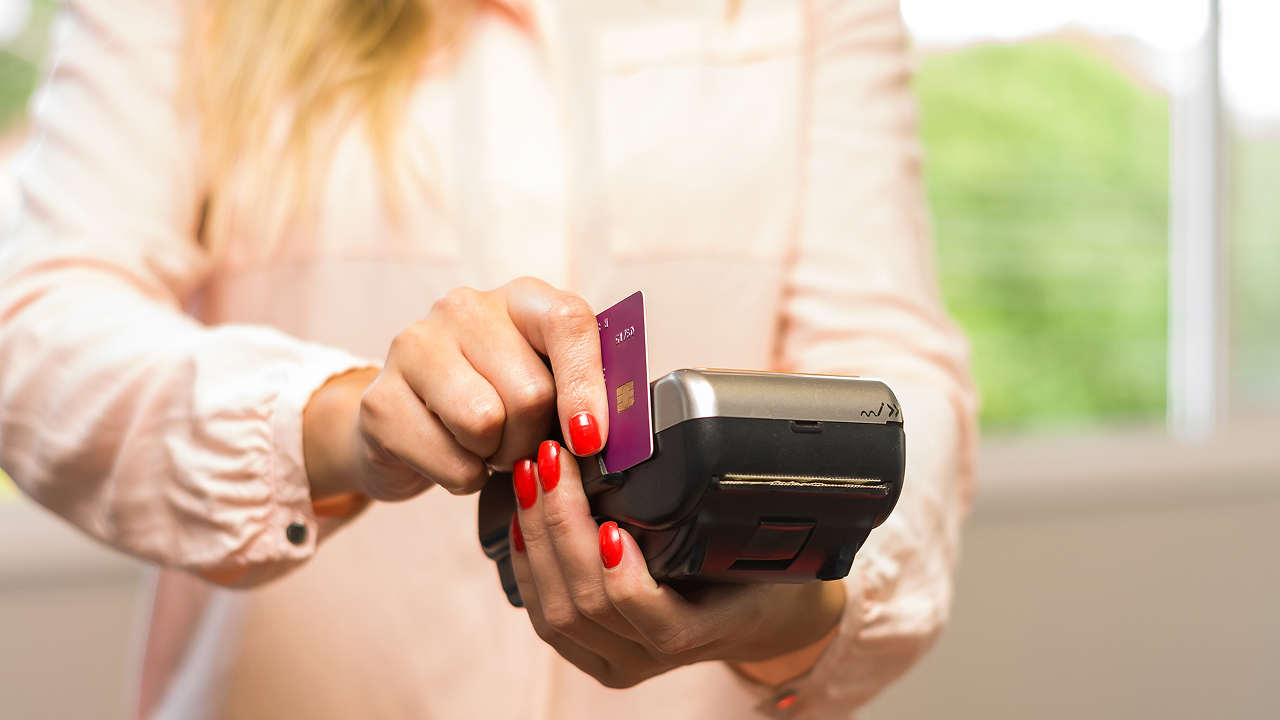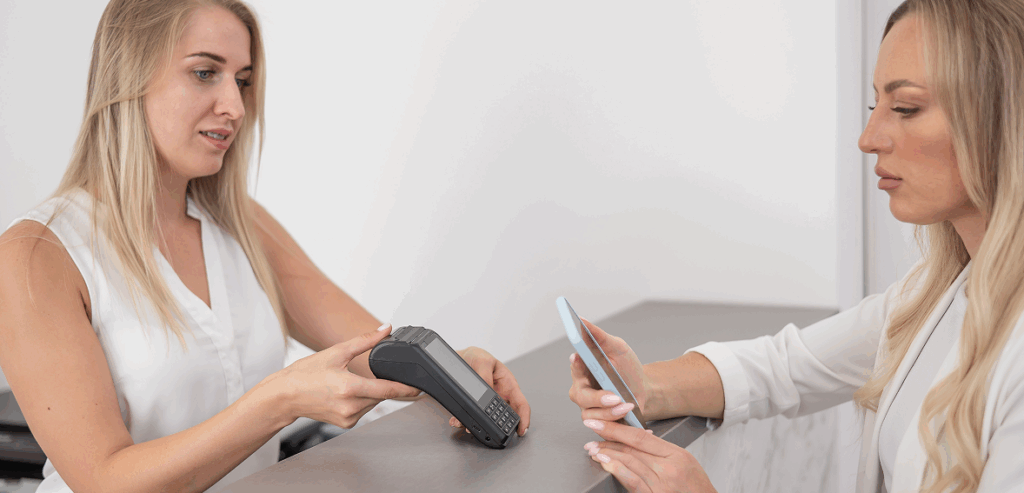
By Ashley Schwarz July 17, 2025
The salon industry has long been about personal connections, human touch, and face-to-face service. But in recent years, technology has quietly reshaped many aspects of this service-oriented space. Among the most noticeable shifts is the growing preference for cashless payments. Once considered a luxury or optional convenience, card and digital payments have now become the expected standard in most salons.
As clients become more accustomed to contactless and mobile payment methods in their daily lives, salons must adapt to keep pace.
The Decline of Cash in Everyday Transactions
In many parts of the world, carrying cash is becoming a rare habit. Consumers now reach for their smartphones, smartwatches, or credit cards more often than their wallets. In the salon setting, this change is especially noticeable as services become more digitized and fast-paced.
Changing Lifestyle Habits
Clients today live in a world built for convenience. Whether it is ordering groceries online, booking rides, or managing finances from a smartphone, most daily activities are now digital. This shift affects how people expect to pay for services, including salon visits. Fewer people carry physical currency, which makes digital payment a necessity rather than an option for service businesses.
Health and Safety Influences
The pandemic accelerated the move away from cash. Concerns about hygiene made people wary of exchanging physical money. Salons, which involve close personal interaction, adopted cashless options to minimize contact and reassure clients. Even after the immediate health crisis, the habit of contactless payments has stayed strong.
What Clients Expect from Modern Salons
As clients grow more familiar with cashless commerce in other areas of life, they expect the same ease and efficiency from their beauty providers. A salon’s payment method can affect whether a client chooses to return or recommend it to others.
Seamless Checkouts
No one wants to end a relaxing salon session with a clunky payment experience. Clients prefer quick, smooth transactions that allow them to tip and pay without delays or awkward steps. The smoother the checkout, the more positive the overall impression of the service.
Multiple Payment Options
Clients are not just using cards anymore. Mobile wallets, tap-to-pay features, and payment apps are becoming increasingly common. Salons that support a variety of digital payment methods show that they are customer-focused and adaptable.
Digital Receipts and Records
In a cashless salon, clients receive email or SMS receipts instead of paper slips. This helps them track expenses more easily and reflects the salon’s commitment to being modern and organized. It also reduces clutter at the counter, contributing to a cleaner customer experience.

Benefits of Cashless Payments for Salons
Moving to cashless systems is not just about meeting client expectations. It can also help salon owners and stylists run their business more efficiently and with fewer risks.
Improved Cash Flow and Faster Access to Funds
Digital payments are deposited into business accounts within one or two business days, depending on the provider. This eliminates the need to handle large amounts of cash, reduces trips to the bank, and helps salon owners manage revenue predictably.
Reduced Theft and Error
With cash handling, there is always the risk of miscounted money, human error, or even internal theft. Cashless systems help eliminate these issues by offering transparent, traceable transactions that are automatically recorded and reconciled.
Easier Financial Tracking
With digital payment systems, salon owners get access to detailed reports that help track income, peak hours, popular services, and tip distribution. This data becomes especially useful when planning for taxes, budgeting, or applying for business financing.
How Cashless Systems Enhance the Client Experience
A salon is more than a place to get a haircut or manicure. It is a space for self-care, confidence building, and personal connection. The way payment is handled can either enhance or disrupt that experience.
No Awkward Conversations About Payment
A common issue in salons is the awkward moment when payment and tipping are discussed. With a digital terminal or mobile payment app, clients can easily select a tip and complete the transaction without needing to exchange cash or discuss amounts openly.
Faster Checkout Process
When appointments run back-to-back, even a few extra minutes at checkout can cause delays. Cashless payments are generally faster and more streamlined, helping stylists stay on schedule and avoid client wait times.
Improved Perception of Professionalism
Clients often associate digital payments with organized, trustworthy businesses. When a salon offers modern checkout options, it signals that they take their business seriously and respect their clients’ time and comfort.
Addressing Common Concerns About Going Cashless
While there are many benefits to cashless payments, some salon owners may hesitate due to perceived barriers. Addressing these concerns can help professionals make confident choices.
Cost of Processing Fees
One of the biggest concerns is the cost of accepting credit card payments. While processing fees are real, they are often outweighed by the increase in client convenience, tips, and retention. Many processors offer pricing plans tailored to small businesses, and these can be negotiated to suit salon-specific needs.
Technology Learning Curve
Stylists may worry about adapting to new payment technology. Fortunately, most modern point-of-sale systems are designed to be intuitive and easy to use. Many providers also offer onboarding support and training, making the transition much smoother.
Excluding Cash-Preferring Clients
Although the trend is moving toward digital, some clients still prefer cash. Instead of going entirely cashless right away, salons can start by offering digital payments as the default method while still accepting cash upon request. This gradual shift helps ease the transition for everyone involved.

Choosing the Right Payment System for Your Salon
Not all digital payment systems are created equal. Salons need to consider their specific workflows, service models, and client preferences when choosing a provider.
Integrated Booking and Payment Tools
Some platforms combine appointment scheduling with payment processing. This can streamline operations by keeping client data, service history, and payment records in one place. For small salons or independent stylists, this all-in-one solution can save time and reduce administrative work.
Mobile Terminals for On-the-Go Stylists
For stylists who work freelance, attend events, or offer in-home services, mobile payment systems provide the flexibility to accept payments anywhere. These devices connect to smartphones or tablets and are especially useful for professionals without a fixed location.
Customizable Tipping and Receipt Options
A good payment system allows clients to easily add tips and choose how they receive their receipt. Being able to personalize these options makes for a more pleasant checkout experience and encourages higher tipping.
Legal and Compliance Considerations
While adopting digital payments is generally straightforward, salon owners should be aware of a few compliance points to ensure smooth operations.
PCI Compliance
Any salon accepting card payments must follow Payment Card Industry Data Security Standards. This includes ensuring that payment systems are secure, client data is encrypted, and software is up to date. Most reputable payment providers handle these requirements automatically, but it is important to verify.
Transparent Pricing and Disclosure
Some regions have rules about disclosing processing fees if businesses choose to pass them to clients. Salons should review local laws to ensure they are operating within regulations and avoid fines or negative customer experiences.
Data Privacy and Consent
If your salon collects client information through payment systems or booking platforms, you must ensure this data is protected. Make sure to gain clear consent and avoid using or sharing client data without permission.
Transitioning Your Salon to a Cashless Setup
Going cashless does not have to be an overnight transformation. With a thoughtful approach, salon owners can make the shift gradually and without disrupting client relationships.
Start with Digital as a Primary Option
Begin by offering card and mobile payments as the default method while continuing to accept cash as a secondary option. Train staff to promote digital checkout in a friendly and non-intrusive way.
Communicate with Clients
Let clients know ahead of time that the salon is shifting toward a cashless system. Use signage, appointment confirmation texts, or social media updates to keep them informed. When clients understand the reason behind the change, they are more likely to support it.
Monitor Feedback and Adjust
Stay open to client feedback during the transition. If certain issues come up repeatedly, such as device slowdowns or confusion about tipping, take steps to address them quickly. A flexible approach helps build client trust and ensures smoother adoption.
The Role of Technology in Shaping Salon Culture
As salons modernize their payment systems, they also reshape how they engage with clients and structure their businesses. Cashless technology is not just about money—it influences culture, brand identity, and daily operations.
Empowering Stylists Through Data
Payment systems often come with dashboards that help track income, service popularity, and customer frequency. Stylists can use this data to fine-tune their schedules, improve marketing, and grow their client base with better insights.
Supporting Team-Based or Booth Rental Models
Whether a salon uses commission-based or booth rental structures, digital payments help simplify revenue tracking and tip distribution. This reduces end-of-day confusion and ensures that everyone gets paid accurately.
Fostering a Modern Brand Image
Clients associate digital-first salons with professionalism, reliability, and trend awareness. Embracing new payment tools positions a salon as forward-thinking and adaptable, which resonates well with younger, tech-savvy clientele.

Future Trends in Salon Payments
The move toward cashless is only the beginning. As technology continues to evolve, salons will have more options to offer fast, secure, and personalized payment experiences.
Contactless and Biometric Payments
In the near future, more clients may pay using fingerprint scanners or facial recognition built into their devices. Salons that stay current with hardware upgrades can tap into these advancements and continue offering seamless experiences.
Subscription and Membership Models
Some salons are exploring monthly membership plans or prepaid service packages. Payment systems that can support recurring billing help simplify these models and create a stable income stream for businesses.
Integration with Loyalty Programs
Digital payments are often linked to loyalty and rewards programs. Salons that leverage this integration can incentivize repeat visits, track client preferences, and build long-term relationships more effectively.
Final Thoughts
The shift to cashless payments in salons reflects a broader change in how people live, shop, and expect services to function. For clients, it is about ease, comfort, and modern convenience. For salon professionals, it is an opportunity to improve operations, build credibility, and meet the demands of a changing marketplace.
Transitioning to digital payments is not just a technical change—it is a mindset shift that aligns your salon with future-ready business practices. By embracing this evolution thoughtfully and strategically, salons can thrive in a landscape where clients value both beauty and efficiency.